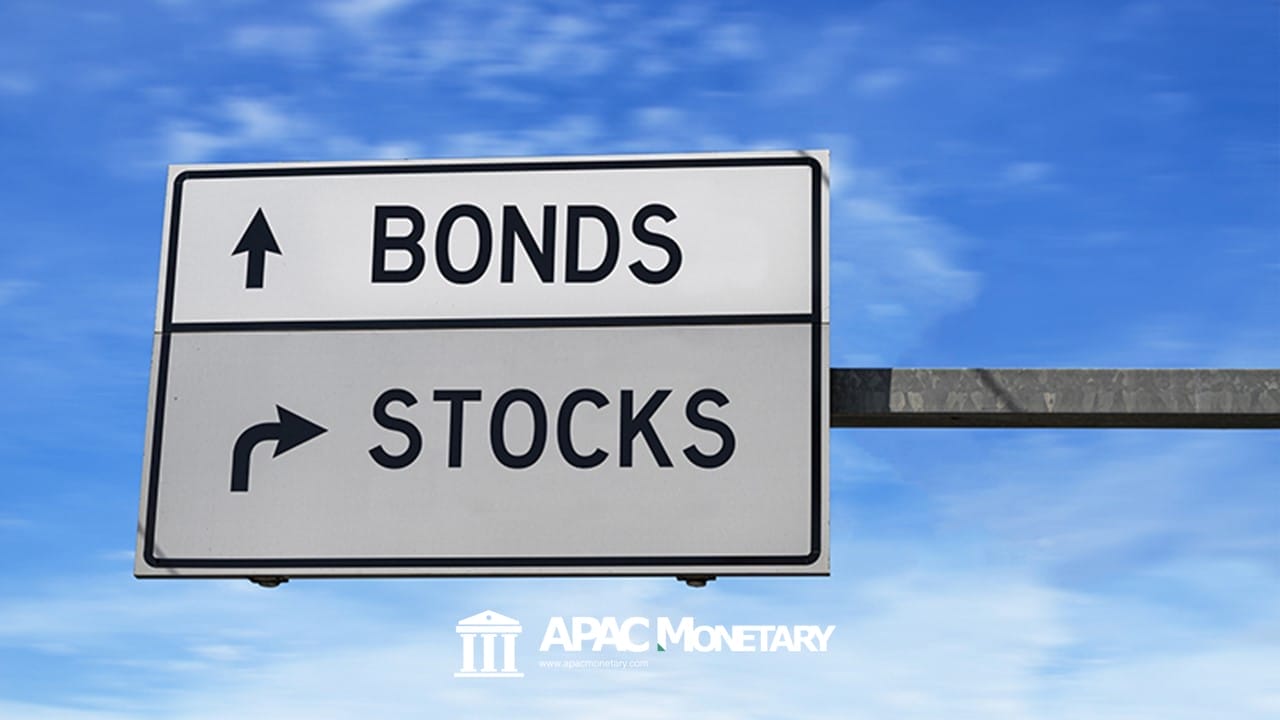Table of Contents
Understanding the six major differences between bonds and equities is essential for investors in the Philippines. By delving into risk factors and income generation, you can gain clarity on which option aligns best with your financial objectives. Whether you’re a seasoned trader or just starting out, comprehending these key differences will enable you to make well-informed decisions regarding your investments. When it comes to selecting the right asset classes for your portfolio, bonds, and equities are among the most popular options in the Philippines, each offering distinct advantages and risks. By recognizing their disparities, you can navigate the world of investing with confidence.

Understanding Bonds and Equities
When navigating the world of finance, it’s important to understand the differences between bonds and equities, as they can really shape your investment strategy. Bonds are similar to loans made by Filipino investors to governments or corporations, and they come with fixed interest rates over specific periods. This stability is great for cautious Filipino investors looking for predictable returns. On the other hand, equities represent ownership in a company, and the potential for making money relies on the company’s growth and how well it does in the market.
Additionally, if a company goes bankrupt, bondholders are first in line to get paid from the company’s assets before stockholders. This means bonds are generally less risky but offer lower returns compared to stocks. On the flip side, investing in Philippine stocks can lead to dividends and big profits during good times, but they also come with higher risks due to market ups and downs.
Understanding these core differences between bonds and equities is really important for building a well-rounded investment portfolio that matches your risk tolerance and financial goals. By having a mix of both types of assets, you can position yourself strategically to make gains while also protecting against unexpected economic downturns.

Definition of Bonds in the Philippines
In the Philippines, bonds are like IOUs issued by companies or the government to raise money. They promise to pay back the borrowed money, plus interest, at regular intervals. Bonds are important in the country’s financial world because they give Filipino investors a safer option than stocks. Stocks give you ownership in a company and the potential for big returns, but they can also be risky because their value can go up and down a lot. On the other hand, with bonds, you can expect steady returns and get paid back before stockholders if the company runs into financial trouble.
Understanding the differences between bonds and equities is crucial for Filipino investors looking to diversify their portfolios effectively. Bonds can serve as a cushion against market fluctuations that typically affect stock prices, particularly during economic downturns or high inflation periods. Furthermore, fixed-income investments like bonds present an attractive choice for risk-averse individuals seeking reliable income streams through regular interest payments—tying into the broader notion of wealth preservation in uncertain times. By balancing their exposure across both asset classes, Filipino investors can strategically navigate Philippine markets while aligning their investment goals with appropriate risk tolerance levels.
Definition of Equities in the Philippines
Stocks, also known as equities, mean that you own a part of a company. In the Philippines, when you invest in equities, you’re buying shares of companies listed on the Philippine Stock Exchange (PSE). These shares can make you money through capital appreciation and dividends, which makes investing in equities really exciting for those looking for growth. Unlike bonds, which are more like loans to companies or governments in exchange for fixed interest, investing in Philippine stocks comes with inherent risks tied to how the company performs. This means that as a shareholder, you’ll ride the waves of the company’s successes and face its challenges too.
Understanding the differences between bonds and equities is crucial for Filipino investors building a diversified portfolio. While bonds offer more stability with predictable returns over time, they generally provide lower yields than stocks during economic growth periods. Equities can be volatile; however, their ability to generate significant returns over extended periods can outpace inflation and enhance wealth accumulation. In contrast, bondholders are prioritized during liquidation events but have limited upside potential, unlike equity holders who stand to gain substantially if a company performs exceptionally well. Hence, grasping these distinctions can aid Filipino investors in balancing risk and reward effectively within their investment strategies.
1. Risk Factors: Bonds vs. Equities
One must consider their unique risk factors when examining the differences between bonds and equities. Bonds are often seen as safer investments because they provide fixed interest payments and have a higher claim on assets if a company goes bankrupt. However, they do come with risks. Bond values can go down if interest rates rise, which can make them less attractive to Filipino investors and cause their market prices to decline. This creates a tricky situation for Filipino investors who want to protect their portfolios.
On the other hand, stocks have their own set of risks but also offer the potential for higher returns. Shareholders benefit from a company’s growth through increased stock prices and dividends, but they also have to deal with the ups and downs of the market and the economy. In short, while stocks can offer greater long-term rewards, they can also have significant price swings that may not appeal to Filipino investors who are averse to risk. Understanding these factors is important for anyone making investment decisions in the dynamic financial landscape of the Philippines. Diversifying your portfolio between these two types of assets is often crucial to effectively balance risk and potential rewards.
2. Returns: Interest vs. Dividends Comparison
When it comes to returns, a pivotal distinction in the differences between bonds and equities lies in their financial benefits: interest versus dividends. Bonds usually offer fixed interest payments at regular intervals, giving Filipino investors a steady income and lower risk. This makes bonds a great choice for those who want stability, especially when the market is uncertain.
On the other hand, stocks work differently by offering variable payouts through dividends when a company does well financially. While this can lead to higher returns during good economic times, it also means dealing with the ups and downs of the market and company profits. Knowing how these two types of returns work can help you align your investment strategy with your risk tolerance and understand the bigger picture of building long-term wealth in the dynamic market in the Philippines.
3. Market Behavior: Stability vs. Volatility
When analyzing the differences between bonds and equities, one of the most striking factors to consider is market behavior, particularly regarding stability versus volatility. When it comes to investing, bonds are like reliable, steady friends you can count on. They provide a stable investment environment with predictable interest payments and lower risk. In the Philippines, where economic ups and downs can impact stocks, bonds can be a safe choice for cautious investors.
On the other hand, stocks can be more like the thrill-seekers of the investment world, with their ups and downs tied to company performance and market dynamics. While they offer the potential for higher returns, they also come with more risk, especially in the fast-changing Philippine economy. This volatility might not be for everyone, but it can also create opportunities for those who don’t mind a bit of excitement in their investments.
Understanding these differences between bonds and equities can help Filipino investors make smart decisions that match their goals and comfort level in the ever-changing world of Philippine investments.
4. Investment Duration: Short-term vs. Long-term
Hey there! When thinking about how long you want to invest, it’s really important to understand the differences between bonds and stocks in the Philippines. Short-term investments usually work well with stocks because you can trade them quickly and take advantage of market trends. Many people like to invest in stocks when the market is doing well because it can help them make money fast and it’s exciting. But stocks can be risky, and their prices can go up and down a lot in a short amount of time.
On the other hand, bonds are usually seen as long-term investments. They give Pinoy investors stability and regular income through interest payments over time. This is great if you want to gradually build up your wealth or protect your money during uncertain economic times. Unlike the exciting and unpredictable nature of stocks, bonds are a safer option, although they might not give you as much return as stocks do when the market is doing well. Understanding how long you want to invest and how much risk you’re comfortable with will help you decide whether to go for short-term stock investments or long-term bond investments in the unique world of finance in the Philippines.
5. Liquidity Differences Between Bonds and Equities
When looking at the differences between bonds and equities, one important thing to consider is liquidity. Bonds usually have lower liquidity than stocks because they are traded less often and in smaller markets. Many people hold onto their bonds until they mature, so they are less likely to sell them on secondary markets. This can make it harder to find a buyer at the price you want and can lead to wider bid-ask spreads.
On the other hand, stocks typically have higher liquidity because they are traded more frequently and on more widely available stock exchanges. This means that Filipino investors can easily buy or sell stocks without seeing big price changes. However, it’s important for investors in the Philippines to remember that while high liquidity might seem appealing, it can also lead to impulsive trading based on market sentiment rather than careful analysis.
Understanding the differences between bonds and equities helps Pinoy investors make smart choices that fit their investment goals, balancing stability with the potential for growth in a changing market.
6. Tax Implications for Bond and Equity Investors
When it comes to Philippine taxes, there are some important differences between bonds and equities: being a bondholder and an equity investor. For Filipino bondholders, the interest income is usually taxed as ordinary income, which can lower your overall yield. However, certain government bonds or municipal securities might give you tax exemptions, which can boost your profits thanks to these tax perks.
On the other hand, if you’re a Filipino equity investor, you’ll typically deal with capital gains taxes, and how much you pay depends on how long you’ve held the investment. Short-term gains are taxed at higher rates compared to long-term gains, which get more favorable tax treatment. It’s important to understand these differences and how they apply to your individual tax situation and financial goals. In some countries, like the Philippines, local regulations can also play a role in whether you should focus more on investing in bonds or equities. Each type of investment comes with its own risk-reward profile and unique tax considerations that should be taken into account when planning your investment strategy.
Parting Thoughts: Differences Between Bonds and Equities
When comparing bonds and equities, it’s important to understand their unique roles in an investment portfolio. Bonds provide a reliable source of income through fixed-interest payments, making them attractive to conservative Filipino investors looking for predictable returns and capital preservation. On the other hand, equities represent ownership in a company and offer the potential for higher returns, but they also come with greater volatility and risk. This fundamental difference influences how each type of investment responds to market conditions, economic changes, or geopolitical events.
It’s also worth noting that the liquidity of these investments varies significantly; stocks can typically be bought or sold quickly on exchanges, while bonds may require more effort to trade due to less active markets for certain types of debt securities.
Understanding these differences between bonds and equities is crucial for Philippine investors who want to diversify their portfolios effectively. By aligning personal financial goals—whether they prioritize steady income from bond investments or seek growth potential in equity markets—Filipino investors can make informed decisions in an ever-evolving landscape.









